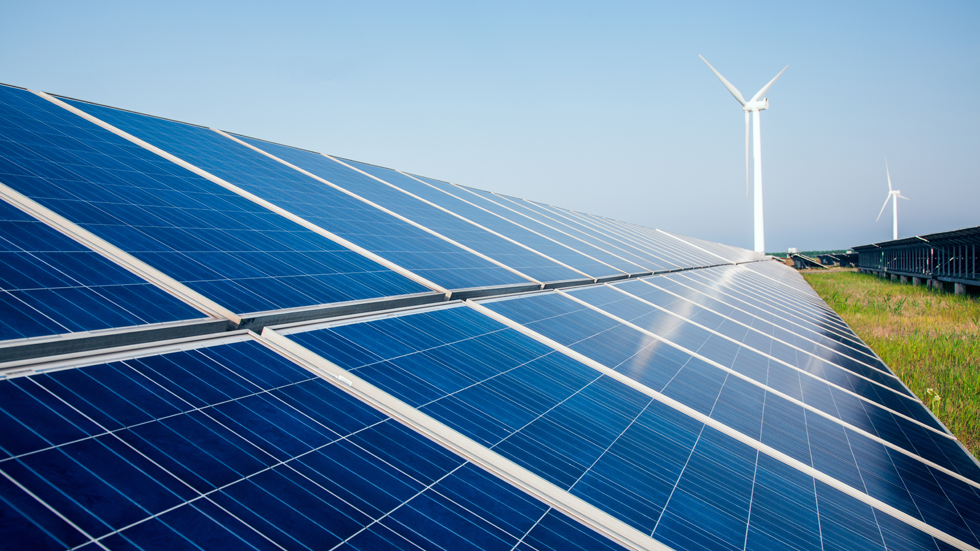Equilibrium/Sustainability — Super Bowl LVI could be hottest on record
Today is Thursday. Welcome to Equilibrium, a newsletter that tracks the growing global battle over the future of sustainability. Subscribe here: digital-staging.thehill.com/newsletter-signup.
This coming Super Bowl Sunday in Los Angeles could be the hottest National NFL championship in history, as heat advisories continue to plague Southern California, The Washington Post reported.
High temperatures this weekend are expected to climb into the 90s in some areas, about 20 to 25 degrees above normal, according to the Post. This is the first time in California’s history the National Weather Service has issued heat advisories in February, with such warnings typically occurring between April and October, the Post reported.
Super Bowl LVI is slated to kick off at 3:30 p.m. Pacific Time, featuring the Los Angeles Rams against the Cincinnati Bengals.
Super Bowl VII, which also took place in Los Angeles in 1973, ranks as the hottest NFL championship yet, with temperatures reaching 84 degrees Fahrenheit by kickoff, the Post reported.
Today we’ll look at the solar rooftop squabble rattling California and a recent breakthrough in fusion, an even more powerful — and elusive — energy source.
For Equilibrium, we are Saul Elbein and Sharon Udasin. Please send tips or comments to Saul at selbein@digital-staging.thehill.com or Sharon at sudasin@digital-staging.thehill.com. Follow us on Twitter: @saul_elbein and @sharonudasin.
Let’s get to it.
Utilities gave $1.7M to counter solar subsidies

California’s three biggest investor-owned utilities (IOUs) collectively contributed about $1.7 million in 2020 to groups that support slashing the state’s rooftop solar subsidies, according to public records.
What’s going on? Pacific Gas & Electric (PG&E), Southern California Edison (SCE) and San Diego Gas & Electric (SDGE) are all major contributors to the Affordable Clean Energy for All coalition, which is seeking to reform California’s Net Energy Metering (NEM) program by reducing paybacks to residential solar customers, according to documents the utilities filed with the state.
While public, these documents were first identified by the Protect Our Communities Foundation, which is against the proposal.
A California controversy: Such reforms are part of a now-postponed proposal from the California Public Utilities Commission (CPUC), which would reduce incentives that homeowners receive for producing solar power, while also charging for grid connection.
The CPUC has said that current payback rates are not linked to how much the electricity is really worth, while the connection fee would ensure that solar adopters are paying their “fair share.”
Similarly, Affordable Clean Energy for All members argue that lower-income Californians are bearing the burden of escalating electricity costs to pay for solar subsidies of well-off residents.
Pushback from celebrities, green groups: But CPUC’s proposed decision has faced an onslaught of pushback from celebrities and from about 600 groups involved in the Save California Solar campaign.
The organizations have called the proposed decision a “plot to hobble the solar program,” according to a joint statement from and the Environmental Working Group the Protect Our Communities Foundation — the group that identified the utility contributions.
‘AstroTurf equity’: Bill Powers, a board member of Protect Our Communities, described Affordable Clean Energy for All as an “AstroTurf equity coalition paid for by the California investor-owned utilities,” engaged in what he sees as a “cynical attempt to play the equity card to sink all rooftop solar boats.”
Powers’s organization found the utility contributions in documents filed to the CPUC under California’s General Order No. 77-M. The files indicate that 71 of the coalition’s roughly 120 members received contributions from the utilities in 2020: $438,625 from PG&E, $1,035,188 from SCE and $196,858 from SDGE, for a total of $1,670,671, as first reported by Inside Climate News.
How did this compare to the utilities’ total donations? In 2020, PG&E made a total of $17.5 million in donations —$7.5 million from the utility itself and $10 million from its foundation, PG&E Corporation — while SDGE donated $13.7 million, according to the 77-M filings.
Edison International’s total philanthropic contributions from shareholders amounted to $22 million, the company’s 2020 Community Impact Report said.
UTILITIES, ROOFTOP SOLAR SUPPORTERS FACE OFF
Ron Gale, a spokesperson for SCE, one of the three power utilities, said in a statement that Edison International — its parent firm — provides philanthropic support to more than 1,000 community-based groups in the region annually, and that just a few dozen are members of Affordable Clean Energy. Others, he said, even oppose the proposed NEM reform.
Gale described the allegations of astroturfing as “repugnant and a disservice” to coalition member organizations.
And the other utilities? Equilibrium reached out to both PG&E and SDGE but did not receive a direct response. However, Kathy Fairbanks, a spokesperson for Affordable Clean Energy for All, said in a statement that she would be responding on behalf of the coalition and the utilities.
“Just as the publicly-traded solar corporations have community outreach budgets, so, too, do the state’s three IOUs,” Fairbanks said, referring to the three investor-owned utilities.
Fairbanks likewise noted that the utilities provide contributions to hundreds of organizations that are not coalition members, and that the coalition has always maintained a transparent list of members.
Turning the tables: Fairbanks also countered that the Solar Rights Alliance — a nonprofit association of California solar users that supports the Save California Solar campaign — fails to disclose “the funding they receive from the financially vested solar industry” on their website.
Linking to January 2022 state lobbyist employer filings for the California Solar & Storage Association (CalSSA), Fairbanks pointed out that CalSSA gave Solar Rights Alliance a cumulative total of $465,218.89 for 2021.
Equilibrium reached out to the Solar Rights Alliance for comment, but did not receive a response before press time.
Rattling ratepayers: Opponents to the solar rooftop reforms maintain, however, that the proposed CUPC decision “would institute a hefty monthly tax on ratepayers” in the joint statement issued by the Protect our Communities Foundation and the Environmental Working Group.
The reform, they argued, would do no less than “crush California’s popular rooftop solar program.”
To read the full story, please click here.
Quest for fusion crosses crucial milestone

Scientists in the U.K. have crossed a crucial milestone in the journey toward plentiful low-carbon energy: five white-hot seconds of sustained fusion power.
While short-lived, the reaction at the Joint European Torus (JET) — which involved heating hydrogen gas to temperatures 10 times that of surface of the sun — is a promising sign for the scientists and investors who see fusion as the key to new era of emission-free power.
First words: “If we can maintain fusion for five seconds, we can do it for five minutes and then five hours as we scale up our operations in future machines,” Tony Donné, program manager of the EUROfusion consortium, said in a statement announcing the results.
What’s EUROFusion? The consortium of 4,800 scientists is just one of about 35 ongoing initiatives to create fusion-based “net-energy”: a reaction that delivers more energy than it takes to produce, according to The Wall Street Journal.
Fusion energy is a form of atomic energy that generates power by “fusing” atoms, unlike conventional “fission” power, which splits them, generating radioactive waste.
Did this one achieve net-energy goals? No. Scientists are still struggling to simply create a stable, self-sustaining fusion reaction — itself a serious challenge, given that it requires them to heat gasses to temperatures above 150 million degrees Celsius (270 million Fahrenheit), according to EUROfusion.
Why so hot? Fusion works on the principle that in zones of tremendous heat and pressure, the nuclei of hydrogen atoms can overcome their natural reticence and “fuse” together — releasing a great deal of energy without any emissions.
The classic power source: Fusion is the energy source that fuels our sun, and as such it can be called the root source of other renewables. Wind and solar power, for example, are ultimately dependent on solar heat — which powers the weather — just as the sun’s fusion also, in eons past, provided the energy currently locked up in fossil fuels.
But unlike renewables, fusion could theoretically provide continuous “baseload” power irrespective of weather — and unlike fossil fuels and existing nuclear power, it produces only inert helium as a waste product.
Big energies, big dreams: That significance gives the race for fusion a utopian cast for an emission-conscious era — albeit one that remains a decade away, and that has been “long derided as a prospect that is forever 30 years away,” according to Nature.
“We’re building the knowledge and developing the new technology required to deliver a low-carbon, sustainable source of baseload energy that helps protect the planet for future generations. Our world needs fusion energy,” said Ian Chapman, CEO of the U.K. Atomic Energy Agency in a statement.
A TESTAMENT TO STATE SCIENCE FUNDING
The quest for net-energy fusion is only possible because of nearly 80 years of state support for advanced science.
Magnetic donuts: That started with the Soviet Union’s investment into the initial research that birthed the now-classic donut-shaped “tokamak” design in the 1950s — which uses a several interlocking magnetic fields to spin and contain the superheated reaction.
And it continues in initiatives like the Europe-based International Thermonuclear Experimental Reactors (ITER) — inaugurated by Ronald Reagan and Michael Gorbachev toward the end of the Cold War, and spreading in previous years to include the E.U., India, China and Korea, according to the project.
ITER is the new focus of fusion attention: EUROfusion’s recent JET experiment managed to break records using a combination of deuterium and tritium fuel — a combination of two variants of the hydrogen atom which are likely fuel sources in any fusion reactor, according to the Journal.
That success came at a price: the five seconds of fearsome heat and pressure from the reaction mean that this “experiment is likely the last it will cope with,” CNN reported.
ITER is waiting in the wings with a massive facility — 10 times larger than JET and 80 percent complete — that is expected to begin running its own experiments by 2026. The project aims to generate a tenfold energy gain of 500 megawatts of power from 50 megawatts of fuel, according to CNN.
Last words: JET has made it clear that this goal “is possible as scientists and researchers claim, and that this is a good step in that direction,” Brett Rampal, nuclear engineer and director of nuclear innovation for the U.S.-based Clean Air Task Force, told the Journal.
Thursday Threats
 Toxic weedkillers, nomadic disease and compound droughts.
Toxic weedkillers, nomadic disease and compound droughts. 1 in 3 Americans exposed to toxic weedkiller: study
- One in three Americans may have detectable blood levels of the cancer-linked herbicide 2,4-D — with young children incurring the most risk from exposure to these toxins, a new study from George Washington University has found. Human exposure to 2,4-D — which has been linked to cancer, reproductive issues and other health problems — has risen with increased agricultural use of the substance, the authors said in a statement.
With tropical diseases on the move, we need early warning systems: scientists
- Tropical and subtropical diseases like Lyme, Zika and West Nile are moving north into new areas, carried by the tiny, climate-sensitive arthropods — like mosquitos and ticks — that harbor them, according to the Proceedings of the National Academy of Sciences (PNAS). Mitigating the damage will require “sophisticated early warning systems to contain an outbreak and prevent cross border transmission,” epidemiologist Jan Semenza told PNAS.
Risk of ‘compound drought’ is rising alongside fossil fuel emissions
- The continued burning of fossil fuels will raise the probability of “compound droughts” — water shortages in two regions simultaneously — by 60 percent this century, according to a study in Nature Climate Change. That could lead to 120 million people worldwide facing simultaneous droughts — which interrupt the transfer of food supplies that could otherwise help drought-stricken regions — each year by century’s end, scientists predicted.
Please visit The Hill’s sustainability section online for the web version of this newsletter and more stories. We’ll see you on Friday.
Copyright 2024 Nexstar Media Inc. All rights reserved. This material may not be published, broadcast, rewritten, or redistributed..











